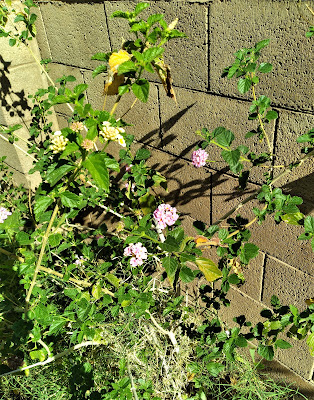October 31st is Reformation Day for Lutherans*. In honor of this, here is the best known hymn by Martin Luther for you to read as a poem. It is based on Psalm 46 and was written around 1529. Some people think Luther wrote it in remembrance of his friend Leonhard Kaiser, who was martyred due to the Reformation.
The translation from German included here is closer to the original German, a little less like the modern hymn. It is based somewhat on literal translations and somewhat on the known translations, with adaptations by this blogger.
The picture included is the Luther's Rose**, designed by him. It is rich in symbolism.
1) A mighty Fortress is our God,
A good Defense and Weapon.
He helps us free from every need.
That has us now o'ertaken.
The old evil enemy
Works still more earnestly.
His pow'r and ploys are great;
His armor is cruel hate:
On earth is not his likeness.
2) With our own strength is nothing done,
Else quick our loss effected.
But for us fights the suitable One,
Whom God Himself elected.
You ask who is He who came?
Christ Jesus is His name,
Of heav'nly hosts the Lord,
God's only Son adored:
The battlefield He must hold.
3) Though all the world with devils were filled
All threat'ning to devour us,
We would not fear, for God has willed
They cannot overpow'r us.
The prince of worldly power,
Howe'er he might glower,
We will not be budged:
Since he's already judged,
One little word can bring him down.
4) The Word they still shall let remain
And not be thankful for it.
He is with us according to plan
With His good gifts and Spirit.
Were they to take our life,
Goods, honor, child and wife,
Let them go away.
They still will have no sway:
The Kingdom shall remain for us.
---Martin Luther, c. 1529; translation by various; adapted c.m.b., 2023
*Reformation Day, October 31st. Centuries before this, the Roman Catholic church had taken over the Druid observance of Samhain. The Druids believed the barrier between the worlds of dead and living was "thinnest" at midnight on October 31st. The Church repurposed November 1st as All Saints' Day. October 31st became known as "All Hallows' Eve" in English. Luther chose the day before All Saints Day, by tradition, to post his 95 Theses (statements) in German on a church door, calling for a debate among church leaders and scholars. These were translated and sparked the Protestant Reformation.
**Luther's Rose: this was first sketched by Luther around 1516 to 1520 and fully designed at the request of Johann Friedrich, Elector of Saxony. The black cross represents Jesus' sacrifice, the blackness symbolizing our sin. The red heart symbolizes our faith; Luther said that because of our sin, the heart ought to be black, yet, due to Christ, the heart is not utterly destroyed. The heart is on a white rose, to show that faith gives joy, comfort and peace: white is the color of angels and spirits. The sky blue field symbolizes joy and that faith is the beginning of future heavenly joy. The gold ring symbolizes precious eternity, which has no beginning and end.
This rendering has the triple phrase often used by Lutherans, sometimes written in Latin: sola fide, sola gratia, sola Scriptura. A fourth could be added: solus Christus, Christ alone.










.jpg)
.jpg)

.jpg)
.jpg)

.jpg)



.jpg)







.jpg)

.jpg)
.jpg)


.jpg)

.jpg)








.jpg)

.jpg)





